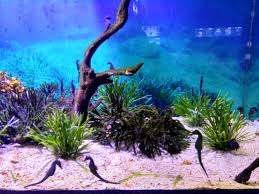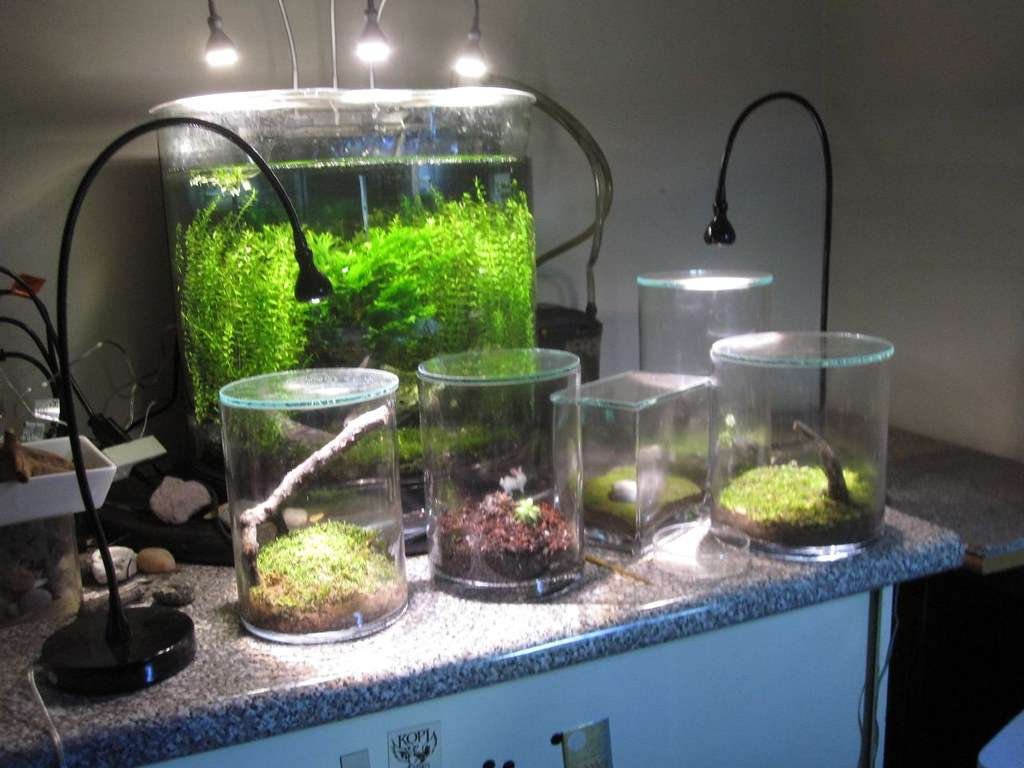HOW TO LIGHT A REEF TANK

Everyone knows that the right lights can make a big difference in your reef tank. In North America, reef tank systems are usually set to a bluer spectrum. In Europe, on the other hand, many reef tank fans prefer a lighter spectrum. LED reef lights today can do both of these things very well, which is good news. You can program these lights to change their range, which includes ramping up and down, channel strength, and being able to be set up minute by minute. To keep stony corals healthy, we strongly advise fans to buy a good lighting system.
A lot of fans like the Kessil, Radion, Neptune, Reef Brite, Photon, AI, Orphek, and other LED lights. Based on our experience, all of these lights can work very well if they are used properly and in the right way for the job. Figure out what you need before you look for lights for your reef tank.
How much electricity do I need? How long and wide is the tank?
Modern reef LED lights will have a wattage number that tells you how much power they can make. Here are the wattage values that work best for different tank sizes:
1 to 10 gallons: 10 to 30 watts
30 to 60 watts for 10 to 20 gallons
30 to 40 gallons: 40 to 80 watts
80 to 100 watts for 50 to 60 gallons
60 to 80 gallons: 100 to 130 watts (think about using more than one bulb)
100 to 120 gallons: 130 to 180 watts (think about using more than one bulb)
150 gallons or more: 200 to 400 watts (think about using more than one bulb)
How would I like the screen to be lit up?
If you use current LEDs, you may notice that a single fixture is brighter right where the bulbs are but less bright as the light spreads out. It’s not a good idea to use a single bulb at full power to light a big display tank because of this. If you want to keep your corals healthy, the water quality, and the depth of your tank, you should use two or more fixtures at 30 to 60% power.
Sometimes, having a warmer spot (a “hot” spot) might be good, especially in a mixed reef. For example, you could put a higher intensity (300–400+ par) in the middle to help corals that need a lot of light, and lower intensity (100–200 par) around the sides to help corals that need less light. Remember that you can also do this with more than one light source by controlling how the light is spread (for example, putting corals that need less light at the bottom and corals that need more light at the top).
In conclusion, T5 bulbs are not as nice to look at, use more electricity, and make more heat than LED lights. Because of these reasons, a lot of amateurs have had great results with 100% LED lighting and don’t use any T5 supplements at all.
Different Kinds of Lights
Fluorescent: Fluorescent bulbs used to be the most popular type of light, and I’ll start by talking about what they are like. Fluorescent lights are described by the size of the tube and how bright they are. The width of a tube is given in 1/8″ and starts with a T. An example of a tube is a T8 that is 1 inch (8/8″). T8 bulbs were the most common and were used in light strips and covers on almost all tanks. These days, though, most tanks use LEDs instead. More narrow tubes are T5, which have a 5/8″ width. Not all T5 bulbs have the same output, but most of the time, you will find ones with a high output labeled HOT5 or T5HO. It’s hard to find T12 bulbs, which have a diameter of 1.5″ (12/8″). However, you may hear of VHO T12s instead. T12 bulbs are old, but they have a built-in reflection that helps direct light into the tank, which is a good thing.
Fluorescent lights need to be replaced every six months, even if they are still working, and they also use more electricity. LED lights have now taken their place as the norm.
Compact Fluorescent: It used to be thought that compact fluorescent lights were not as good as other types. These days, they’re almost obsolete, but you may still find them. To light up the reef, they were used. On my 45-gallon reef, I used a 4×96-watt, 36″ compact fluorescent bulb. But the bulbs are almost impossible to find these days, and even if you do find a fixture that works, it probably isn’t worth any money.
Metal Halides: Because they are so bright, metal halides used to be the standard for reef lights. But now that the best LED lights are out there, they are mostly useless. Metal halides are pricey and use a lot of power. They also give off a lot of heat. Actinic light should also be added to them, and the bulbs should be changed every year. People who keep reef aquariums are going back to halides, but most of them have already had success with halides and haven’t tried the right LEDs yet.
Reflectors: With fluorescent and metal halide lights, reflectors are very important because they change how much light gets to the tank. A 4-bulb HOT5 fixture with a single-curve reflector will not let as much light into the tank as a fixture with multiple curved reflectors. Good reflectors can make a huge difference in how much light gets into the tank because they send it toward the water instead of letting it bounce around.
LEDs: Because they have so many benefits, LEDs are quickly becoming the standard for high-end lights. Price-wise, they range from less than $50 to more than $600. The best things about LEDs are that the bulbs never need to be replaced, they use less power, they don’t make as much heat, and they direct the light downwards so that it all goes into the tank. Better LEDs let you change both color and brightness, which makes them the best choice for lights.
The good news is that you can now find great LED lights that don’t cost $400 to $600 each. People think that kessils are better than radions because they combine the light and send it out through a single lens, which gets rid of spots of different colors. Also, black box LEDs can be just as good as top-shelf LEDs for a lot less money, even though they are usually made in China and aren’t a well-known brand name.
The actinics of LEDs make a big difference, making corals’ colors more vivid and bright. A current or niche LED will work for even the smallest tanks, but black box LEDs are better for the bigger ones. It’s important to remember that many LEDs list a range of tank sizes that they can fit, so you should think about how long the light is.
Make sure that the color and brightness of the LED light you choose can be changed. This will give you options for different tanks and changing tastes.
Glass tops and splash guards
1. Keep the glass tops clean so that algae, mineral deposits, and salt creep don’t block the light and more light can get into the tank. If you don’t clean the glass tops, light may not be able to get through, and corals can be hurt by sudden, strong light after cleaning.
2. If you don’t use a glass top, make sure the splash guard is on the light source so that the bulbs don’t come into direct contact with water. Most good light fixtures have splash guards that protect them from water.
3. If your light bulb is over open water, leave the splash guard on. If your top is made of glass, take it off. Make sure you clean the splash guard often.
4. Put a lid on your tanks to keep the fish inside. For this reason, glass tops work well, and some people use clear mesh tops to let air flow but keep the fish inside.
Photoperiod
The length of the lighting is an important thing to think about. My favorite way to ensure a steady photoperiod without having to keep an eye on things is to set the lights on a timer. Fixtures with built-in timers are too complicated for me to use because they can make it hard to change the lighting plan by hand. Any standard aquarium light timer from a hardware store or department store should work. It’s important that the timer works with the type of plug on the light fixture.
Natural room lights can be enough for tanks with only fish. But adding more artificial light can make watching the fish more fun. In these tanks, a few hours of lights at night might be enough.
Reef and planted tanks need different amounts of light. Simple lighting for planted tanks can usually run for 6 to 14 hours a day, giving the tank enough light without encouraging algae growth. Reef tanks need different timers for the blue and white lights. The blue lights are usually turned on for an extra hour at the beginning and end of the white light cycle. For the corals and fish, this setting makes the change more gradual and lets you see the corals in a different light spectrum.
It is important to remember that extending the photoperiod cannot make up for not having enough light. Trying to make up for less lighting by adding more hours can throw off the balance of the tank and cause algae problems, especially with weaker lights like 2-bulb HOT5 or some LED setups. If this happens, it’s better to buy a better light source than to make the photoperiod longer.
Spreading the Light
Remember to think about how the light will be spread. More than just how well one light bulb spreads light. It’s also about how well the whole tank is lit. For example, a 48-inch light bulb is often used in a 48-inch tank. But in tanks without a reef or plants, it can look nicer if the lights aren’t all the way along the tank.
There are silver dollars, a bichir, catfish, and small to medium-sized cichlids in my 220-gallon tank. The tank is six feet long, but I only have lights on one end. One part of the tank is well lit, another is lit but not directly, and about a third of the tank is dark. This is made more interesting by the big piece of driftwood blocking even more light in the dark part.
With this, not only does the tank look different and interesting, but the fish also feel more at ease. A lot of the fish we keep only come out at night or don’t like being in full sunlight. The fish can feel more at ease when the light levels are changed. While it might seem like this would make them hide more, it can actually work the other way around. If a fish is looking for a dark place and the whole tank is bright, it will probably stay under a rock, piece of driftwood, or other decoration. On the other hand, if parts of the tank are dark and shadowed, the same fish will feel more at ease coming out and sticking in the dark end of the tank.
If you do it right, partially lighting the tank can look nice, even in a planted or reef tank. Having areas with high and low light can help you put corals or plants in the best places. Having a completely dark end can also make the fish feel better and add new depth to the tank.

